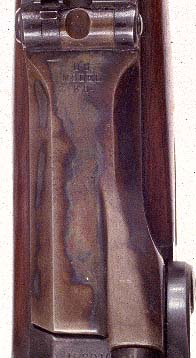 | Two M84 Rifles
in nearly new condition. Note the colors that appear, and the patterns made. This is Springfield color case hardening. |  |
|---|
This page is dedicated to helping the collector detect reproduction or refinished parts that are now in the market place. Items discussed and illustrated on this page are: breech block color case hardening, cartouches, firing proofs, and barrel stampings.
 | Two M84 Rifles
in nearly new condition. Note the colors that appear, and the patterns made. This is Springfield color case hardening. |  |
|---|
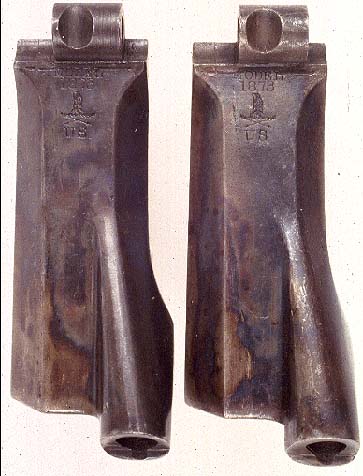 | Two of the earliest breech blocks with square corners and minimal metal above the firing pin hole. These blocks have been used, the marks from hitting the receiver are obvious near the hinge, and the stamping has been partially removed from buffing. The colors are bright and heavily figured. Note the similarity to the Springfield block colors and patterns. |
|---|
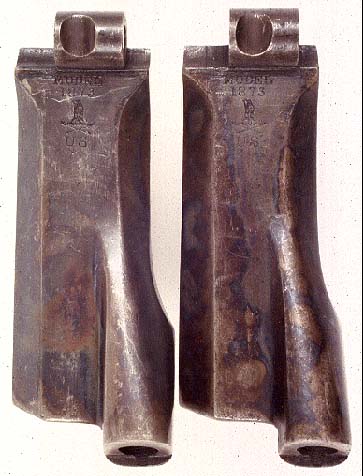 | Two Type II breech blocks with square corners and additional metal above the firing pin hole. These blocks have been used, the marks from hitting the receiver are obvious near the hinge, and the stamping has been partially removed from buffing. The colors are bright and heavily figured. Note the similarity to the Springfield block colors and patterns. In all of these pictures it appears that the color is easily chipped as if the hardening process did not adhere the oxide rigidly to the surface. (I need a metallurgist for this one.) |
|---|
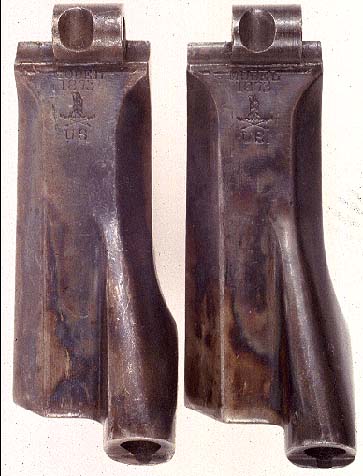 | Two Type II breech
blocks
with square corners and additional metal above the firing pin hole.
These
blocks have been used, there are marks from hitting the receiver,
and the sharp edges and stampings were partially removed during
buffing.
A block would have to be carefully inspected to be sure if it had been redone. The easiest and quickest test would be to check for the sharpness of the edges and the lack of marks near the hinge. If marks are present and the stampings are not sharp, then there probably is a problem. Remember, the color case did not survive excessive use. To have good color will require an almost new gun. |
|---|
I received an e-mail from Don Harpold (Dwharpold@aol.com) who had just looked at the pictures, and he had the following assessment which he is going to support with some pictures: I have been following the case color discussion and after looking at the pic's on the site I feel that these are probably period recolors as I purchased the sporter thats on page 191 of Book 1 from Tom, and the colors are very close to the same from what I can tell from the pic's. Furthermore the colors on my sporter are almost the same as on another sporter purchased at a recent gun show that is probably a SH&G. I will try to take some good photos of the breech blocks and send them to you as soon as I can. Here they are, three lock views and three breech block views of three different Schuyler, Hartley & Graham sporters. The top one, caliber .40-65, is owned by Tom Trevor and is SN 19521. The middle one is also owned by Tom Trevor (SN 6207, caliber .40-65) and is the gun on the dust cover of Grant's book, More Single Shot Rifles. The lower one, caliber .45-70, is owned by Don Harpold and is SN12247.
 |
|---|
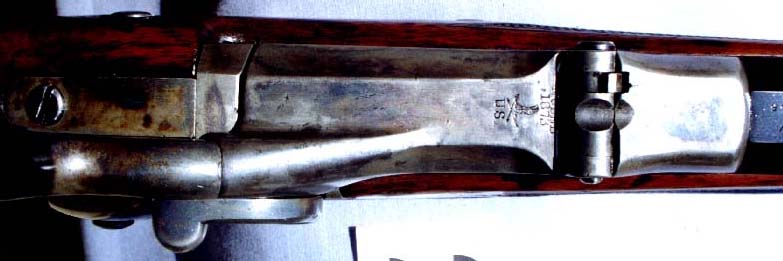 |
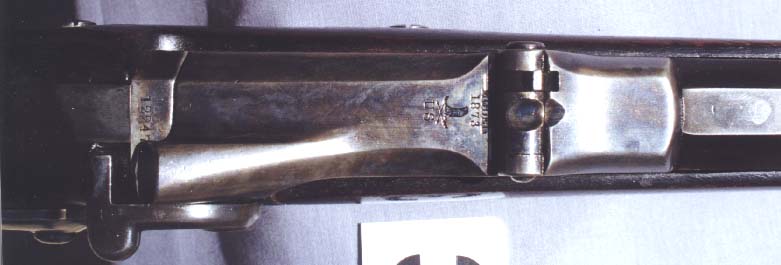 |
| The three guns above, produced by Schuyler, Hartley & Graham, have polished and recolored breech blocks. Note the round edges on the second breech block. The hammer with this gun has .50-70 knurling. In some cases, the breech blocks have lost most of their color case. Also, the tangs seem to have more color than the blocks. The breech block in #1 is of the first style with square corners in a receiver with rounded corners. This can be seen by noticing the sighting relief on the hinge is not as deep as that on the receiver, and by examining the following lock plate view of #1. |
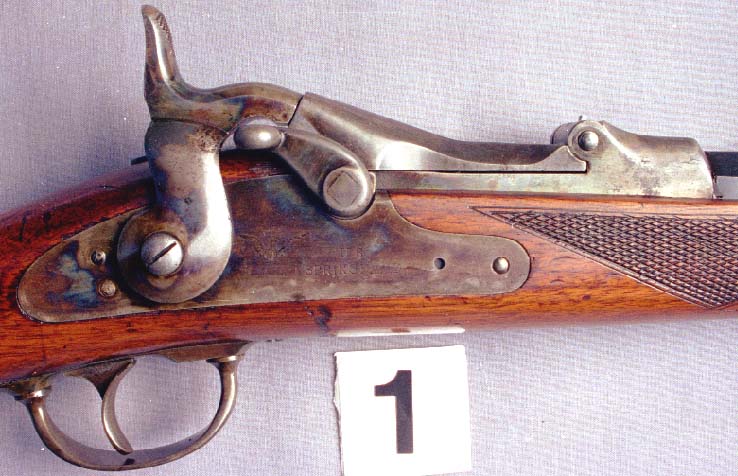 |
|---|
 |
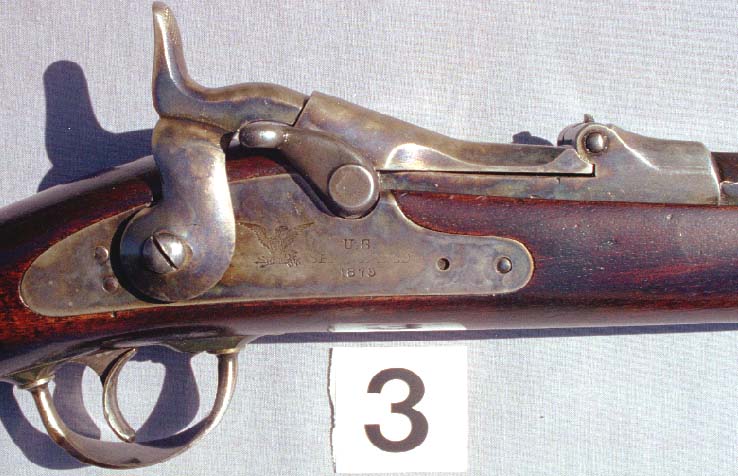 |
| The lock-side view of the same three SH&G guns. Note the polishing of the lock plates. In some cases, the eagle and the word SPRINGFIELD have been almost removed. Beware of any .45-70 trapdoor with a color case hardened hammer, lock plate, thumb piece, butt plate, receiver or possibly the trigger guard. Note, #1 and #2 have trigger bows with mounting stems that seem too short. #3 seems to be the correct trigger bow. They have a mix of thumb pieces and lock plates as well as hammers. Several of the hammers are musket hammers with reworked heads (notice the high arch under the hammer of #1 and #2, #3 is a normal second model hammer without the lip). Don mentioned that the guns have thinned trigger guards so as to look like cadet models. All three have color case hardened butt plates. |
I have been given one breech block/tang set that has been recolor cased recently. It is shown below. As I get more, I will post them here. Comparing the number of colors and the lack of red and the strong blue color, makes this one an obvious redo.
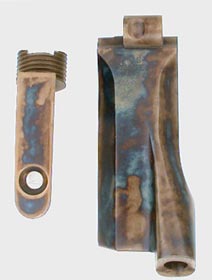 |
|---|